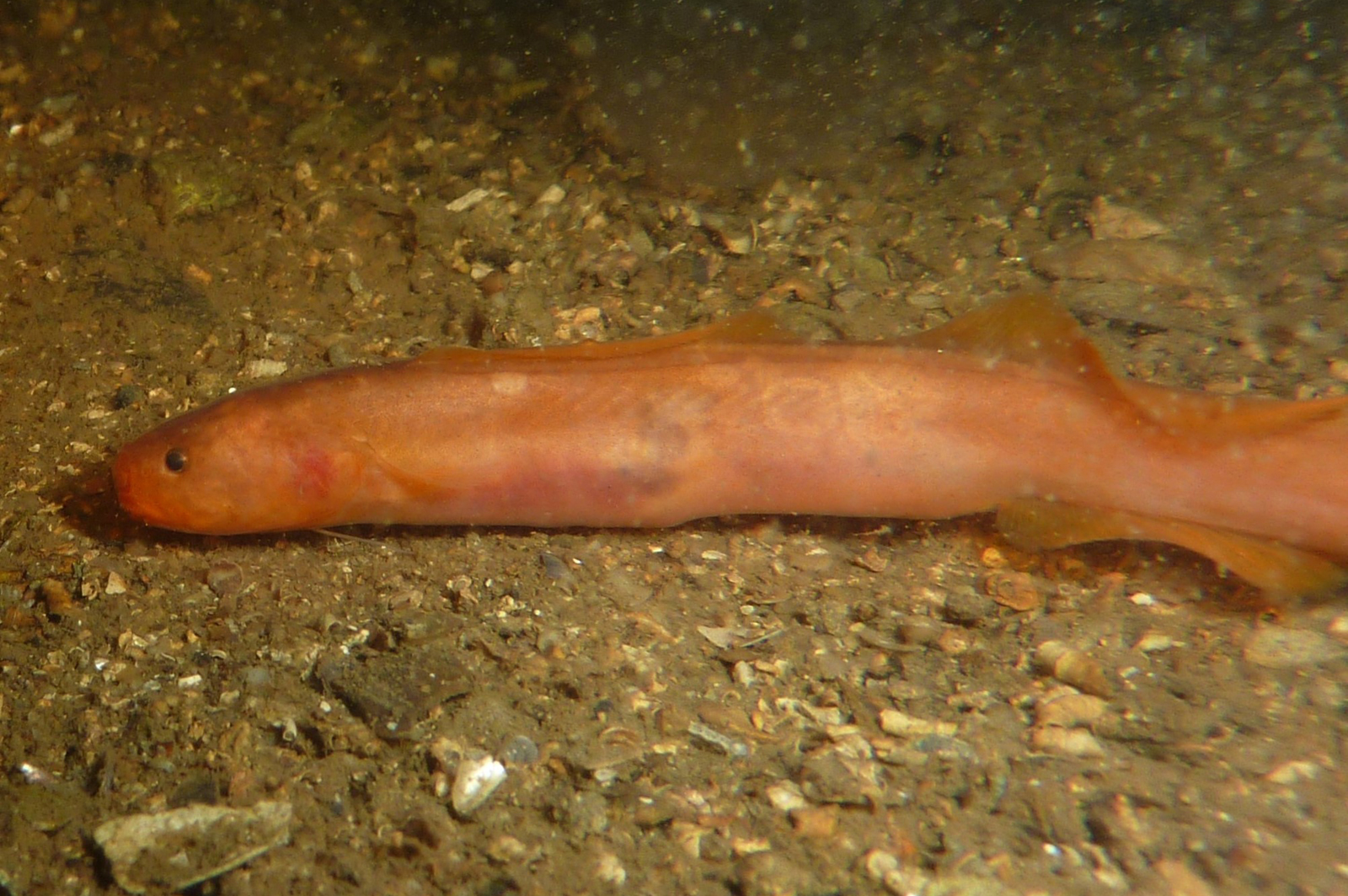Orange Eelpout, Dipulus caecus Waite 1905
Other Names: Blindfish

An Orange Eelpout, Dipulus caecus, at night in the Swan River estuary, Western Australia, August 2018. Source: jmartincrossley / iNaturalist.org. License: CC by Attribution-NonCommercial
Cite this page as:
Bray, D.J. 2018, Dipulus caecus in Fishes of Australia, accessed 07 Jul 2025, https://fishesofaustralia.net.au/home/species/4066
Orange Eelpout, Dipulus caecus Waite 1905
More Info
|
Distribution |
Endemic to Western Australia, from Cape Leeuwin to Point Quobba. |
|
Features |
Dorsal fin 161-191; Anal fin 109-124; Vertebrae 22-25 + 57-65 = 79-87. Body very elongate, almost eel-like; broad angle on ventral maxilla positioned behind rear of eye; exposed opercular spine small, short, straight; lower lip with prominent skin folds; D/A 58-75, V/A 27-2. Scales absent; no supraorbital pore behind eye; lower preopercular pores 2; posterior infraorbital pores 3. Single pair of pseudoclaspers curved outwards, with narrow base and pointed tip, with broadly expanded fleshy flaps anteriorly and posteriorly; penis small, less than half the length of pseudoclaspers, with hook at tip; otoliths pointed anteriorly, rounded posteriorly, predorsal angle more pronounced than postdorsal angle. |
|
Species Citation |
Dipulus caecus Waite 1905, Records of the Australian Museum 6(2): 78, pl. 11(2). Type locality: Fremantle, Western Australia |
|
Author |
Bray, D.J. 2018 |
|
Resources |
Orange Eelpout, Dipulus caecus Waite 1905
References
Cohen, D.M. & Nielsen, J.G. 1978. Guide to the identification of genera of the fish order Ophidiiformes with a tentative classification of the order. National Marine Fisheries Service (U.S.). Technical Report 417: 1-72 figs 1-103
Gomon, M.F. 2008. Family Bythitidae. pp. 356-359 in Gomon, M.F., Bray, D.J. & Kuiter, R.H. (eds). Fishes of Australia's Southern Coast. Sydney : Reed New Holland 928 pp.
Hutchins, J.B. & Thompson, M. 1983. The Marine and Estuarine Fishes of South-western Australia. Perth : Western Australian Museum 103 pp. 345 figs.
Machida, Y. 1993. Dipulus norfolkanus, a new shallow-water bythitid fish from Australia (Ophidiiformes). Japanese Journal of Ichthyology 40(1): 43-46
Møller, P.R., Knudsen, S.W., Schwarzhans, W. & Nielsen, J.G. 2016. A new classification of viviparous brotulas (Bythitidae) – with family status for Dinematichthyidae – based on molecular, morphological and fossil data. Molecular Phylogenetics and Evolution 100: 391-408. https://doi.org/10.1016/j.ympev.2016.04.008
Møller, P.R. & Schwarzhans, W. 2006. Review of the Dinematichthyini (Teleostei, Bythitidae) of the Indo-west Pacific. Part II. Dermatopsis, Dermatopsoides and Dipulus with description of six new species. The Beagle, Records of the Museums and Art Galleries of the Northern Territory 22: 39-76
Nielsen, J.G., Cohen, D.M., Markle, D.F. & Robins, C.R. 1999. Ophidiiform Fishes of the World. An annotated and illustrated catalogue of pearlfishes, cusk-eels, brotulas and other ophidiiform species known to date. FAO Fisheries Synopsis No. 125 Vol. 18. 178 pp.
Pollard, J. (ed.) 1980. G.P. Whitley's Handbook of Australian Fishes. North Sydney : Jack Pollard Publishing Pty Ltd 629 pp.
Waite, E.R. 1905. Notes on fishes from Western Australia. No. 3. Records of the Australian Museum 6(2): 55-82 fig. 23 pls 8-17 See ref at BHL




